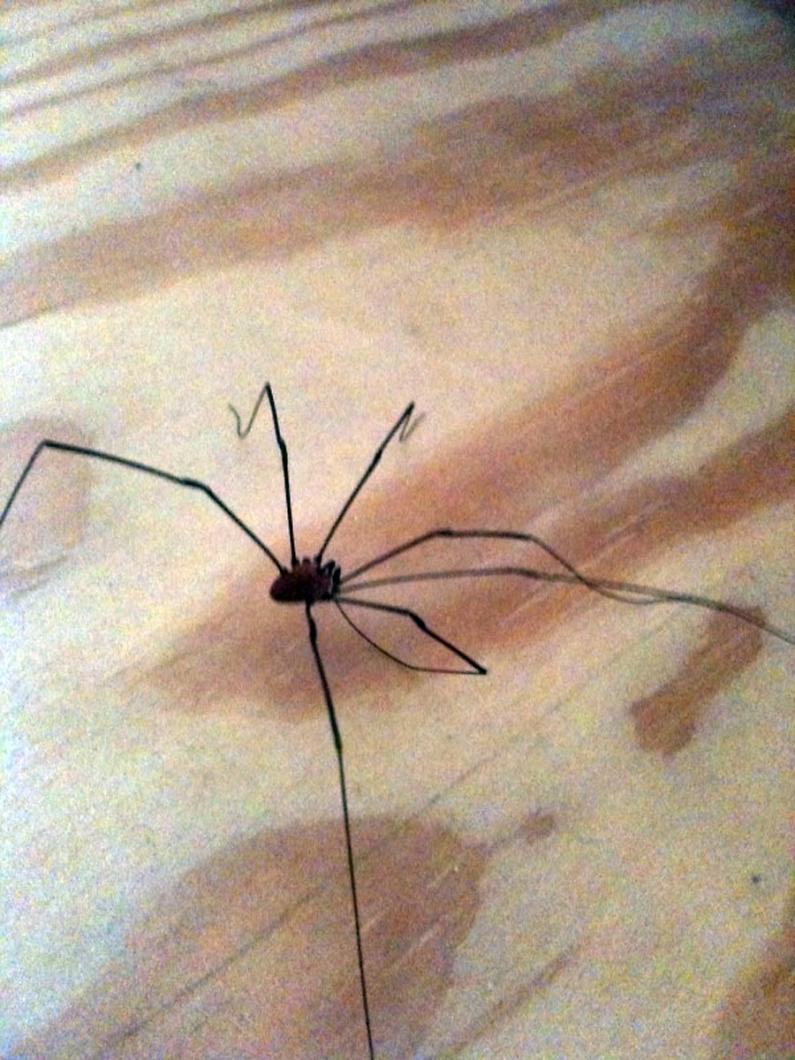“With great power comes great responsibility.”
And with those words come a great connection to the topic of this column. They were spoken by that famous philosopher, the uncle of Peter Parker aka Spiderman. I think of them every time I look at the restrooms at Felix Neck. There I find a stupendous amount of spiders. It is my decision whether they live or die, a great power and a great responsibility — the matter of insect life or death isn’t an easy choice.
As a naturalist I know that spiders eat insects and that for every spider that lives, the number of mosquitoes and other insects in the old barn is reduced. But I also understand that Fern and Feather campers (and other Felix Neck visitors) are afraid to use the restrooms because of all of the spindly spiders. It is more than an arachnid annoyance; it is clearly a critter conundrum.
We call the long-legged loafers of the lavatory “daddy long legs,” and that is where the confusion begins. Paul Eldridge noted that “in the spider-web of facts, many a truth is strangled.” He had a point when it comes to daddy long legs.
In the world of daddy long legs, there is a small problem with identity theft. Two eight-legged beasts go by that name, only one of which is actually a spider.
The daddy long legs spider is a true spider. Also called a vibrating spider or a cellar spider, it hails from the scientific family Phalicidae. Like its spindly spider brethren, it boasts eight legs, eight eyes, and two body parts. These are the cephalothorax and the abdomen, which is not segmented.
The daddy long legs spider can also make silk and weave a web. Its signature web is messy and irregular and has no adhesive property to capture its prey. This spider can vibrate rapidly, hence the name, to confuse and capture prey and it can even vibrate quickly enough to make itself appear to disappear.
The other daddy long legs is not a spider at all. It is a harvestman or opilionid (hailing from the scientific order opiliones). These spider imposters have only one pill-bug-like body segment, two eyes, and can’t produce silk. They are found under logs and rocks, but are less inclined to make your house their home.
Harvestmen grow constantly and need to molt every 10 days. It takes up to 20 minutes to extract their long legs from their shedded exoskeleton. They have legs to envy — consider that a human would have 40 to 50 foot legs if we had their measurements.
Urban myth states that daddy long legs have the most venomous bite of any spider, but cannot penetrate human skin. This has proven to be untrue for both daddy long legs species. The daddy long legs spider does have fangs, but they are short, or uncate, fangs and even if they do penetrate human skin, will not cause any damage. The harvestman has no venom, fangs or poison to speak of, although it will give off a stinking odor as defense.
Harvestmen can do one more interesting feat. Their legs easily fall off and will twitch even after they have become detached from their body.
Another hint for identification is that the daddy long legs spider will carry her eggs by her jaws in loose sacks until they hatch. Our restroom residents are holding their eggs this way, while the harvestmen women lay their eggs in a nest guarded by the male of the species.
It was Sir Walter Scott who coined the phrase “Oh what a tangled web we weave, when first we practice to deceive.” While I don’t think I’ll be able to trick or fool the spider squatters into abandoning the restrooms at Felix Neck, I am looking for a less drastic option than making constant spider sweeps through the building. I don’t know if there is any resolution, perhaps Peter Parker has a spidey solution.
Suzan Bellincampi is director of the Felix Neck Wildlife Sanctuary in Edgartown.




Comments
Comment policy »